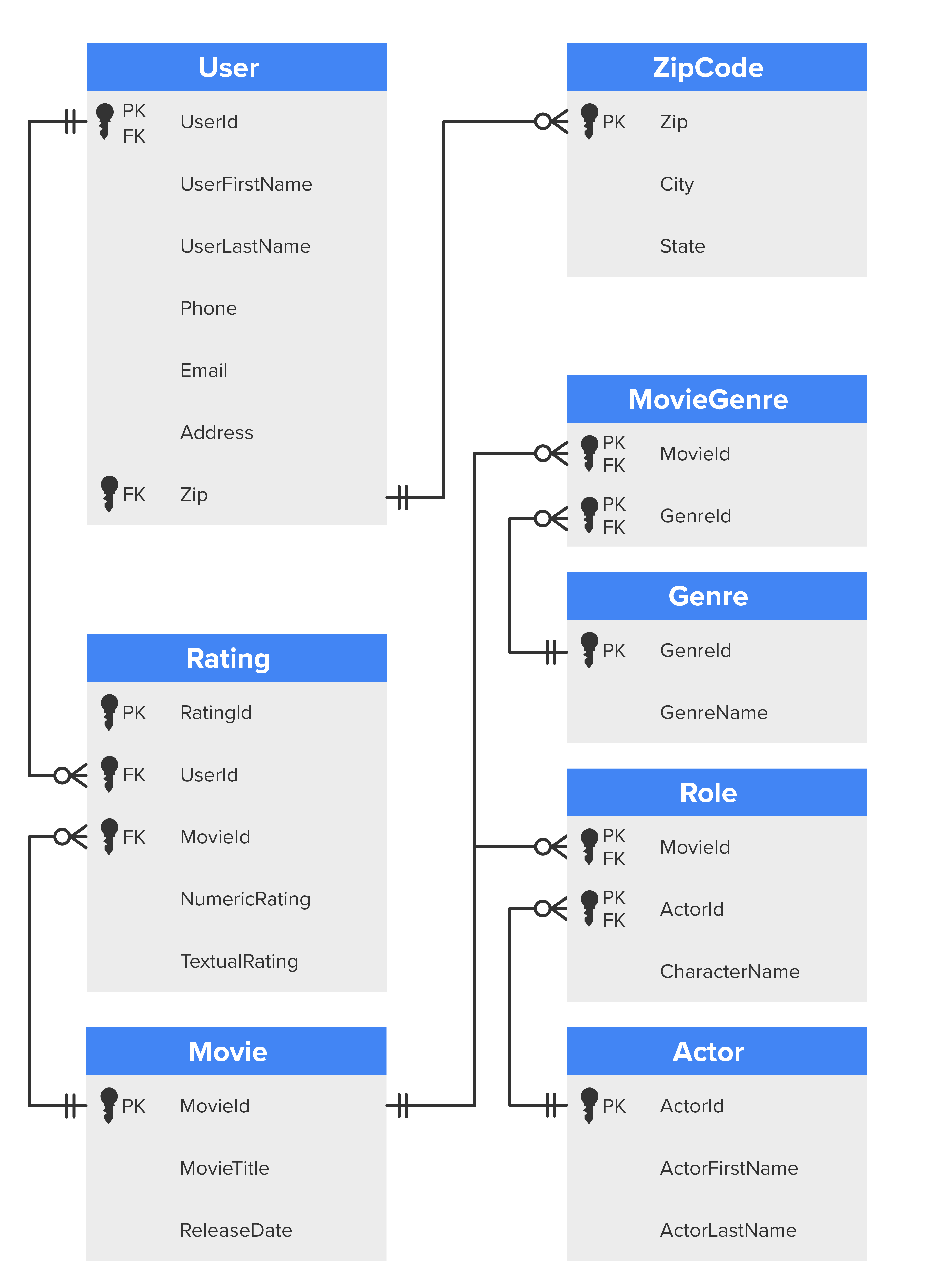In this lesson, you will explore converting a database design from the second normal form (2NF) to the third normal form (3NF), in three parts. Specifically, this lesson covers:
1. Requirements for Third Normal Form
The third normal form (3NF) is generally the final stage of most normalization processes. It requires that the database design first fulfills the requirements of the second normal form (2NF) but also ensures no transitive functional dependency.
-
This means that every attribute that is not the primary key in a table must depend on the primary key and only the primary key. In other words, imagine that column A determines column B, and column B determines column C. You would have a transitive functional dependency because column A then determines column C. Column C should be removed and placed in a separate table to resolve this issue. You need to check this for each column in all of our tables.
2. Movie Ratings Example
Here is our database design that was in second normal form (2NF):

3. Applying the Third Normal Form
However, imagine you wanted to expand the User table to include additional details about the user, such as the email, phone number, address, city, state, and ZIP code. Let's assume that all of the users are in the United States. By expanding it in such a way, our User table would now look like the following:
- User (UserId, UserFirstName, UserLastName, Email, Phone, Address, City, State, Zip)
Looking at this table now, you can see that the Zip determines the City and State. This is a transitive functional dependency because the Zip is dependent on the UserID, and the City and State are dependent on the Zip. To convert this table to 3NF, you would need to move this data into a separate table like this:
- User (UserId, UserFirstName, UserLastName, Email, Phone, Address, Zip)
- ZipCode (Zip, City, State)
The User table would link to the Zip in the ZipCode table. This way, any time the ZIP code was entered, the city and state would automatically be established. If you had to add an address in any other table later on, you could use the same ZipCode table as a lookup table. The resulting ERD in 3NF would look like the following:

Note, though, that the ZIP code itself is not commonly split up on its own, even with it being a 3NF rule, as there are instances where a ZIP code in the U.S. can reflect different cities. If you plan to have this setup for any country, this may not apply either, in which case the following ERD would make the most sense:

Depending on the requirements, this will be our final normalized database design in the third normal form (3NF).
In this lesson, you learned the requirements for the third normal form (3NF) will ensure that the database fulfills all second normal form (2NF) rules and handles transitive functional dependency. You saw that after the normalization to the second normal form (2NF), our movie ratings example is already in the third normal form (3NF) since none of the non-primary key fields depend on something other than the primary key. Finally, you learned how to apply the third normal form (3NF) rules while expanding the User table to include additional details.


